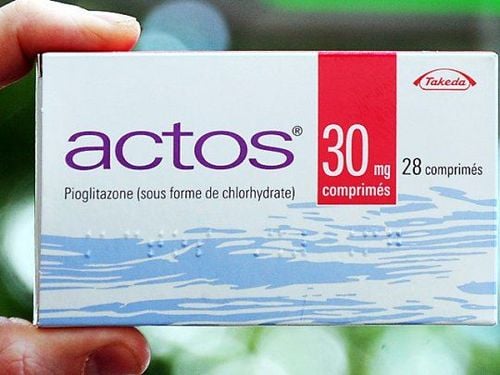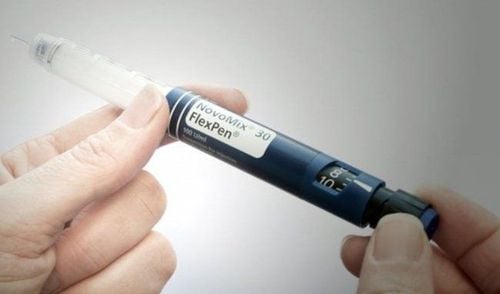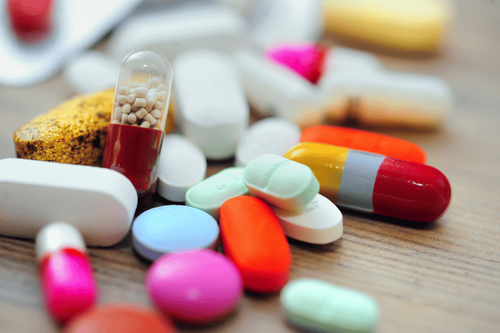This is an automatically translated article.
Glimepiride with the main active ingredient is glimepiride 2mg. It is used to control blood sugar in patients with non-insulin-dependent type 2 diabetes.
1. What is Glimepiride 2mg?
Glimepiride is a medicine made in the form of tablets with the active ingredient glimepiride 2mg. It is used to control blood sugar in patients with non-insulin dependent type 2 diabetes.2. Pharmacokinetics of Glimepiride 2mg
Glimepiride is completely absorbed and the presence of food does not significantly alter its absorption. The maximum concentration of the drug in the blood plasma will be reached about 2 hours and 30 minutes after the drug enters the body.
The half-life after repeated doses is 5 to 8 hours and may be prolonged at high doses.
In patients with decreased creatinine clearance, increased plasma clearance of Glimepiride and decreased mean serum concentrations may be due to increased elimination due to decreased protein binding. In these patients there does not appear to be any drug accumulation.
Glimepiride has the ability to cross the placental barrier but is poor at crossing the blood brain barrier.
3. Indications for the drug Glimepiride
Glimepiride is a new generation hypoglycemic sulfamide belonging to the Sulfonylurea group of drugs used for patients with type 2 diabetes. The mechanism of action is mainly by stimulating insulin release through islet beta cells. Langerhans in the pancreas. On the other hand, Glimepiride also has some extra-pancreatic effects or it can be said that Glimepiride has a dual mechanism of action in the pancreas and outside the pancreas such as:
Effects on insulin release: In the membranes of beta cells , sulfonylureas regulate insulin secretion by closing ATP-dependent potassium channels. This leads to membrane depolarization causing increased calcium migration into the open calcium channel cells. An increase in intracellular calcium levels stimulates the release of insulin from the cells.
Extrapancreatic effects: Extrapancreatic effects include increased sensitivity of peripheral tissues to insulin and impaired hepatic insulin reuptake.
Carrier proteins of the cell membrane are the bridge for the collection of glucose in the blood by muscle cells and fat cells. This helps limit the rate at which glucose is used. Glimepiride has the effect of rapidly increasing the number of active transporters in the membranes of fat and muscle cells that stimulate glucose uptake.
Therefore, Glimepiride is indicated for use in adults with non-insulin dependent type 2 diabetes. These subjects were unable to maintain stable blood glucose levels despite diet, exercise, and weight loss alone.
4. How to use Glimepiride 2mg
The drug is to be taken orally with one tablet per day at breakfast or the first main meal of the day.
For previously untreated patients, an initial dose of 1-2 mg/day may be used. Special patients such as debilitated, malnourished or elderly people, people with liver or kidney failure, who are at risk of hypoglycaemia should take 1 mg/day. If the patient is already being treated with other antidiabetic agents, a dose of 1-2 mg/day is recommended. Maximum dose 2 mg/day.
5. Contraindications of Glimepiride 2mg
Patients with a history of hypersensitivity to Sulfonylurea, Glimepiride or Sulfonamide or any component of the drug. Patients with insulin-dependent diabetes mellitus, diabetic ketoacidosis and coma. People with severe liver and kidney failure should consider switching to insulin. Women who are pregnant and breastfeeding.
6. Some side effects of the drug Glimepiride
Serious undesirable effect is hypoglycemia. Some common side effects such as dizziness, headache, dizziness, vomiting, nausea, feeling of fullness in the epigastric region, diarrhea, abdominal pain, temporary visual disturbances when starting the drug.
Above are the uses, dosage and usage of Glimepiride. Patients should carefully read the instructions for use, consult a doctor / pharmacist before use. Absolutely do not arbitrarily buy medicine to treat at home because there may be unwanted side effects.
Please dial HOTLINE for more information or register for an appointment HERE. Download MyVinmec app to make appointments faster and to manage your bookings easily.













